
An altogether premature look at the potential Detroit Red Wing line-up on night one of the 2023-24 NHL season
An altogether premature look at the potential Detroit Red Wing line-up on night one of the 2023-24 NHL season
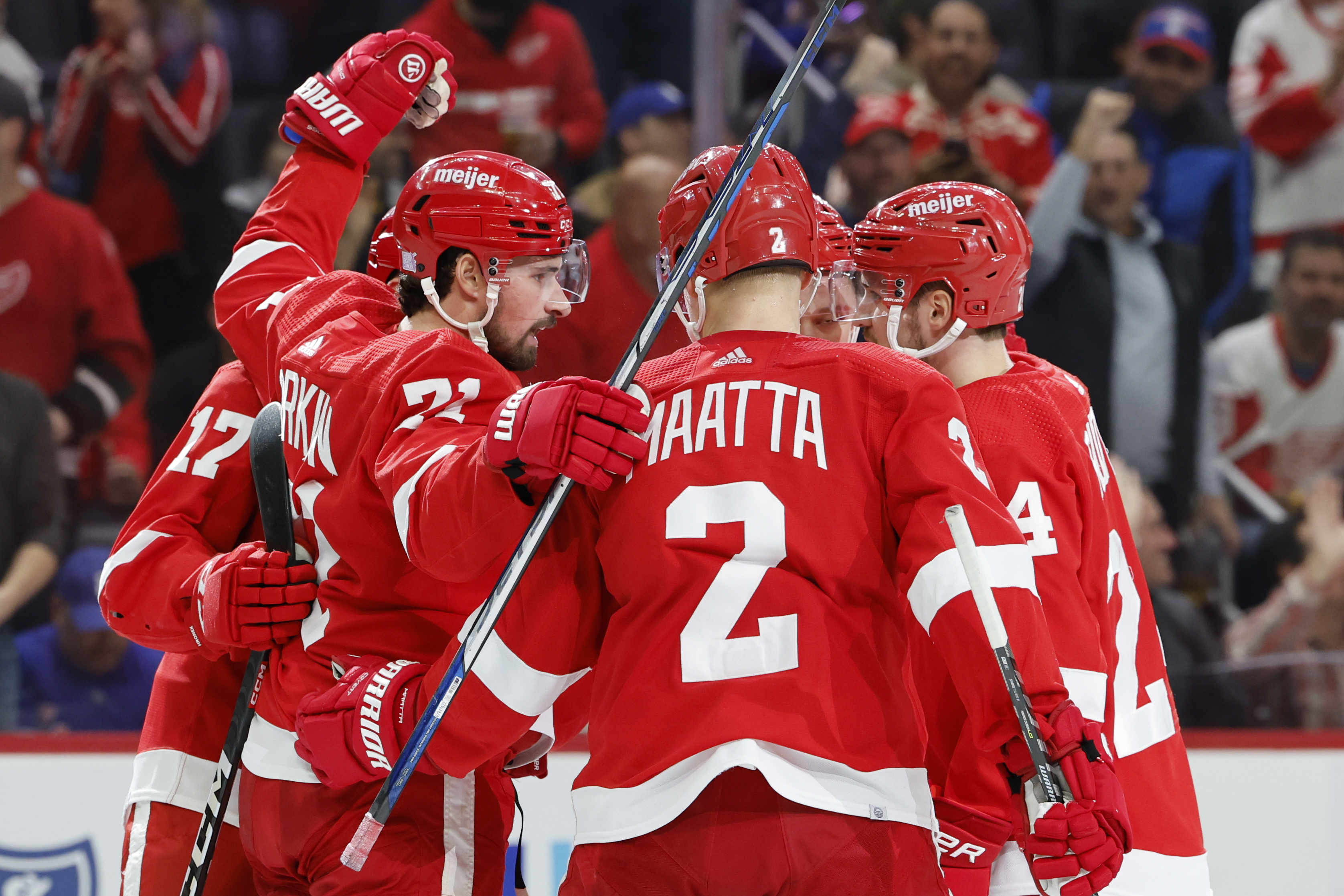
The puck will drop on the Detroit Red Wings 2023-24 season in just 89 days.
At this distance, there's plenty we don't know: Who set training camp ablaze with torrid early season form, who might pick up an injury in the preseason, who showed chemistry with whom in camp.
Nonetheless, the bulk of Detroit's off-season business is done, and, at the very least, we have a rough sense of who will be vying for a place in the line-up come October 12th and the season opener in Newark.
Yesterday, to provide some organizing questions, I reviewed three key variables in the Red Wings' roster construction that will help shape the night one line-up: the number of players under the age of 23, the role for Andrew Copp with J.T. Compher in the mix, and how the newcomers will fit in on defense.
Today, let's take a stab at four forward lines, three defense pairs, and a couple of goaltenders.
Line One: Alex DeBrincat-Dylan Larkin-Michael Rasmussen
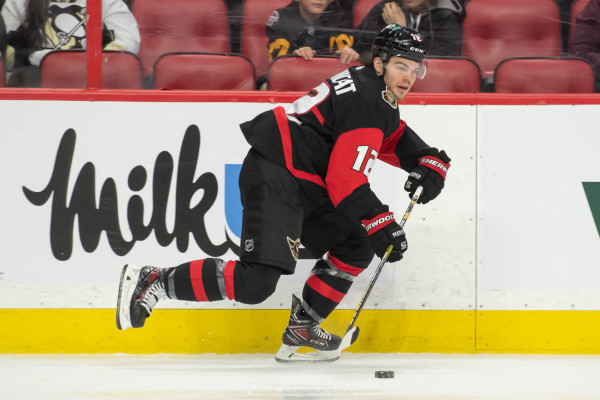
One line in and we've arrived at two more significant questions: which side will Alex DeBrincat play on, and just how loaded do Steve Yzerman, Derek Lalonde, and the rest of the Red Wings' brain trust want the top line to be?
To open the season, there can be little doubt that both Larkin and DeBrincat will comprise two-thirds of Detroit's top line. Larkin is the franchise centerman upon whom the entire project rests, and DeBrincat is the shiny new toy meant to provide a spark to the Red Wing attack. Maybe a time will come over the course of the season when Lalonde decides to break the two up to better disperse his top scoring options, but for night one, a DeBrincat-Larkin partnership on the top line looks like a certainty.
On his official roster page, DeBrincat is listed at right wing, but he spent most of last season playing on the left wing with Shane Pinto and Drake Batherson in Ottawa. During his Chicago days, DeBrincat typically featured on the left wing on the same line as Patrick Kane, who would man the right flank. With that in mind, I suspect DeBrincat begins his tenure in Detroit on the left.
That brings us to the second question: Just how offensive do the Red Wings want this line to be?
It will be tempting to load up the first line with Lucas Raymond and DeBrincat, which is a perfectly legitimate option. However, I suspect Detroit will air more on the side of trying to pair two players with chemistry (in this case, that would hopefully prove to be DeBrincat and Larkin) with a worker/forechecker type.
There are a couple of options on Detroit's roster for that shotgun role on the line, but I've chosen Michael Rasmussen.
The main reason for that decision is just how much Yzerman gushed about the 24-year-old Vancouverite in his post-free agency press conference. "I think he really did take a step last year in his overall game," Yzerman said of Rasmussen. "I think we all see him maturing as a hockey player, maturing as a young man, and physically maturing. You see it on the ice in his skating. Michael's worked really hard...He's stayed in Detroit in the off-seasons and really worked at it. His skating has really improved. He's a really dedicated athlete, and his confidence on and off the ice has really grown, and I'm really, really happy for him because he's put a lot of work in, and he really cares."
It's that type of mentality that can earn Rasmussen a spot in the top six he couldn't and wouldn't claim on pure ability, and his toolkit should serve him well in a supportive role for Larkin and DeBrincat, two players whom he can keep up with now in part because of his improved skating.
Line Two: Lucas Raymond-J.T. Compher-David Perron
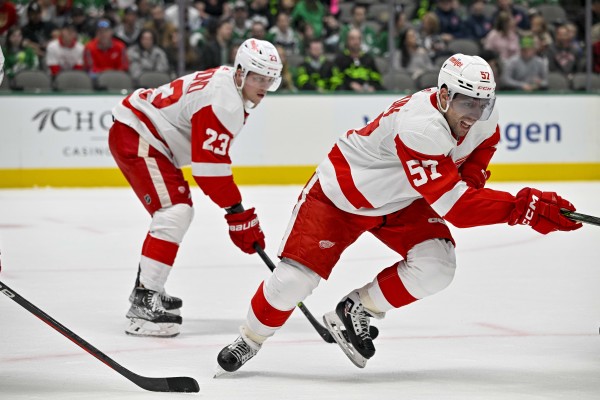
There's a risk in this alignment of destabilizing Lucas Raymond. The 21-year-old Swede has spent a healthy majority of his NHL minutes on Dylan Larkin's wing, and in this scenario, DeBrincat has supplanted him in that role.
Still, moving to the second line doesn't have to be a demotion for Raymond but rather a means of conveying to the young winger that the organization believes he can be an effective player away from Larkin.
In Compher, you have a steady, 200-foot play-driving presence. In Perron, you have a highly intelligent creator with plenty of snarl and know-how in winning board battles. That leaves Raymond to play the part of scorer. It's a formula that, at least in theory, should maximize all three players' skillsets, while giving Detroit a more dangerous second line than its had in recent years.
Compher's spot here (as the team's second center) is by no means assured. He could wind up behind Copp as the third center, or he could even flex out to the wing. However, the way Compher responded to his promotion from third to second center in Colorado a season ago suggests to me that he is the best candidate for this job to open the season.
Compher won't bring killer finishing instincts, but he will keep this line moving in the right direction, and that gives him an edge to me over Copp for the second center slot. Still, I wouldn't expect a major discrepancy in Compher and Copp's minutes by season's end.
Line Three: Jonatan Berggren-Andrew Copp-Daniel Sprong
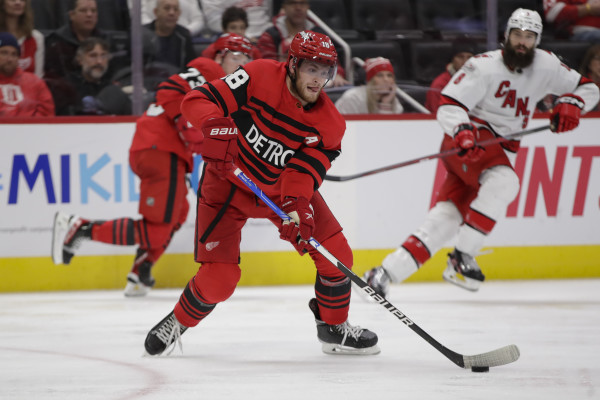
Among the reasons I like Copp on the third line instead of the second is his potential connection with Daniel Sprong.
Copp's acumen as a puck carrier in transition should provide Sprong with a steady diet of quality offensive opportunities, which for Sprong really means chances to deploy his wicked shot. That shot should also pair well with Berggren, whose primary offensive identity is as a set-up man.
As laid out here, this isn't a line you would expect to have exemplary five-on-five impacts; that's not really Copp's game, and it certainly isn't Sprong's. Berggren posted strong underlying numbers as a rookie, but that was from a sheltered role.
However, this should be a third line with legitimate offensive punch and upside. You'd have three players capable of scoring from the middle of an NHL line-up operating together, which should set up the Red Wings with more depth scoring than they've had throughout the Yzerman era.
The gamble here is that Copp, Sprong, and Berggren can atone for whatever deficiencies they might have to deal with in play-driving with chemistry in the offensive zone to improve their finishing.
In some ways, that sounds more like a second line than a third, so once again, I think it's worth pointing out that there may not be much of a difference in terms of role and deployment at five-on-five between the Red Wings' second and third lines, centered by Copp and Compher.
Line Four: Robby Fabbri-Joe Veleno-Klim Kostin
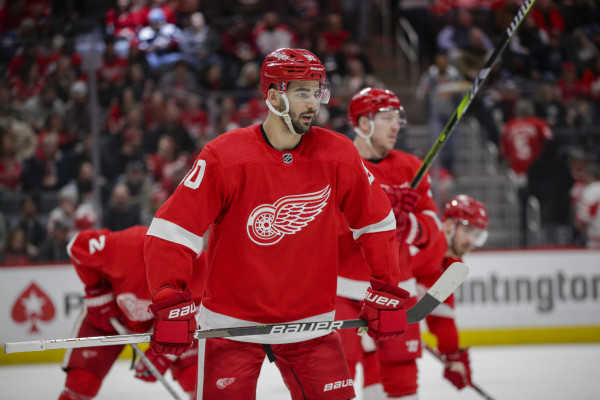
We're left with something of a hodgepodge fourth line, but it's one featuring players with an established aptitude for the role.
Down the middle, Joe Veleno has matured into a bottom six pivot role. Like Rasmussen's, Veleno's growth has caught the attention of his general manager. "I'm hopeful and I'm expecting and I'm counting on Joe Veleno to take another step," Yzerman said of Veleno earlier this month.
"Another good young man who was really driven and wants to do well. I don't know that he was a healthy scratch at all last year, where in previous years, he was in the minors...He's evolving as a player. Much like Michael has adapted, I think [Veleno] in junior was considered a power play net-front guy. He's learning how to check. He's learning how to win face-offs. He's killing penalties. That is earning him ice-time, and the offensive part [of his game] is growing."
On his left, Robby Fabbri is probably over-qualified for fourth-line minutes, but unfortunately, I think that's where Fabbri's inability to stay healthy since his arrival in Detroit leaves him. Fabbri came to Hockeytown in November of 2019 by way of St. Louis. In the three full seasons since, he has played 30, 56, and 28 games.
There's a lot to like about Fabbri's game, and, by raw ability, he is more than capable of locking down a middle six role. However, until he can sustain a longer run of success and health in a Red Wing uniform, I'm not sure he will earn that chance.
That leaves the final forward spot to Klim Kostin, who, in this scenario, would have beaten out fellow newcomer Christian Fischer for that place in the line-up. I could see either of those players claiming that role, or both finding their way into the bottom six and forcing someone else out, but I went with Kostin for the size and physicality he can provide in a limited role.
Top Pair: Jake Walman and Moritz Seider

Keeping Walman and Seider together on the top pair might be the easiest choice anywhere up and down this line-up. Seider's sophomore struggles washed away when Walman joined him on the first pair a year ago, and I see no reason to disrupt that rhythm going into the new season.
Walman might not have arrived in Detroit to great expectations, but his smooth skating, solid puck-moving, and defensive awareness made him a great fit beside Seider.
Seider, for his part, will be looking to establish himself as a beyond-any-doubt number one NHL defenseman this season. Having a partner with whom he shares chemistry like Walman feels like a no brainer as Seider embarks on that quest.
Second Pair: Ben Chiarot and Justin Holl
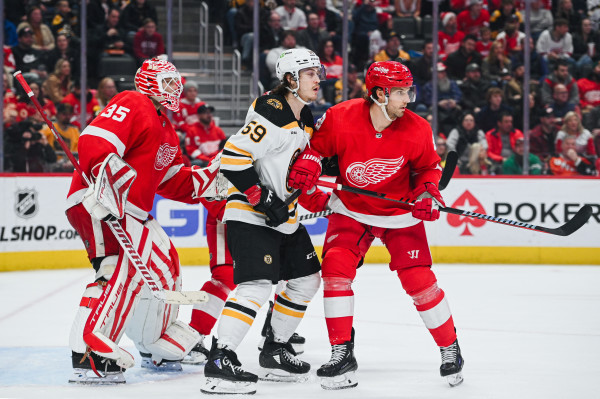
The basic idea behind pairing Chiarot and Holl is that they might help cover one another's weaknesses. Chiarot is big and bruising in front of the net but struggles to move the puck. Holl struggles at the goal mouth and with mental errors, but he can snap a breakout pass. Put them together, and, at least in theory, their vulnerabilities should be compensated for.
Chiarot—signed last summer to a four-year, $19 million deal—and Holl—brought in as a free agent this summer for three years and $10.2 million—were both controversial signings upon their arrivals in Detroit.
Chiarot's underlying numbers were nothing short of disastrous, so a four-year term was alarming to Red Wing fans, while Holl signed this summer as a potentially useful piece but with little explanation as to how or why he'd earned a three-year term and raise on his previous deal.
For Yzerman and company, the hope may well be that by putting these two questionable deals together, the Red Wings might be able to maximize the value of each player.
Third Pair: Olli Maatta and Shayne Gostisbehere
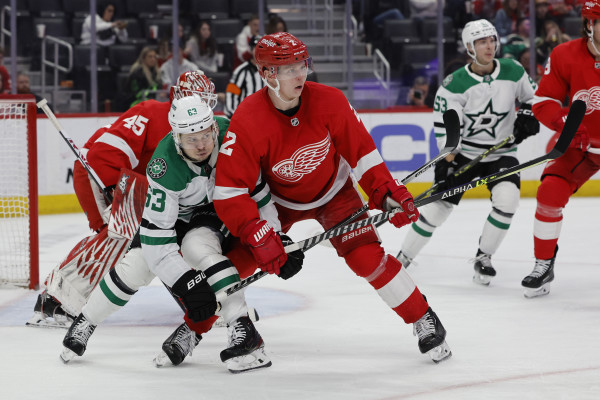
That leaves us with a third pair of Gostisbehere and Maatta. That's an unspectacular grouping but a functional one and about what you'd expect out of a bottom pair in the modern NHL.
Both should be special teams contributors (Gostisbehere on the power play and Maatta on the penalty kill), and, not unlike Chiarot and Holl, there's a sense of complementary skillsets at work. Maatta is a defense-first player, while Gostisbehere's gifts revolve around his acumen with the puck.
That the Red Wings can now deploy six established NHL defensemen should not be overlooked. For rebuilding teams, it can be easy to see the deficiencies relative to the league's elite toward the top of the line-up (i.e. a lack of elite talent/star power), but often it's the black holes at the bottom of the line-up that sink those rosters to the league's ocean floor because they are forced to use players who simply aren't at an NHL level.
With this array of defensemen, Detroit should be comfortably past the point in its rebuild where it suffers from this affliction.
Starting Goaltender: Ville Husso
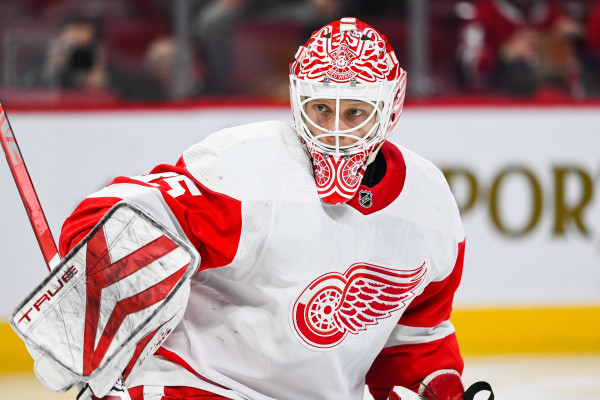
Ville Husso's first season in Detroit was far from stellar, but the Wings' off-season suggests that Yzerman and company believe he should remain the team's starter between the pipes.
In 56 games a year ago, Husso mustered an .896 SV% and 3.11 GAA. He picked up 26 wins along the way. The advanced numbers at MoneyPuck.com are not kind to Husso, ranking his -14.7 goals saved above expected 57th amongst goaltenders who played in at least twenty games last season.
Detroit was not an easy place to tend goal a year ago, and it hasn't been for some time. As such, Husso's numbers should be taken with something of a grain of salt, especially considering he was also adjusting to a new team and defense in front of him.
There were a number of goaltenders available on the open market and a few more rumored to be up for grabs via trade, but Detroit only targeted netminders with a realistic ceiling as back-ups in James Reimer and Alex Lyon.
What does that mean? Come October, it will be Husso's net, barring an unexpected revelation between now and then.
Back-Up Goaltender: Alex Lyon
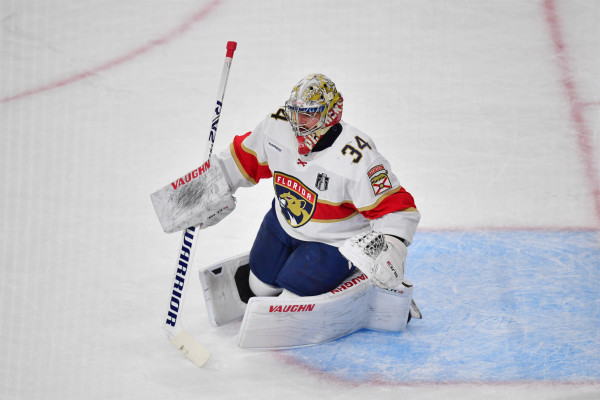
Reimer and Lyon will compete for the back-up job behind Husso in training camp. Reimer has a much longer track record in the NHL (476 games played compared to just 39 for Lyon). Still, Lyon's '22-23 results were far superior to Reimer's. Lyon was a .912 SV% in 15 games with the Panthers, while Reimer was just an .890 in San Jose.
This will be more or less an open competition in training camp, and I'm inclined to give the edge to the player with a much more recent record of quality NHL results, even if he doesn't have much of a history of doing so.
